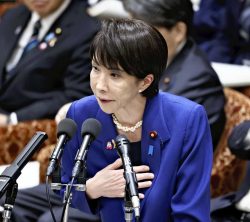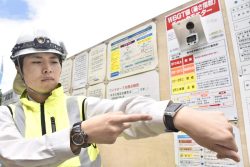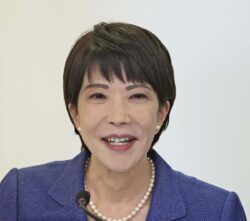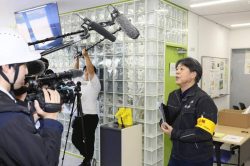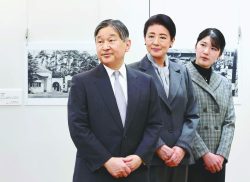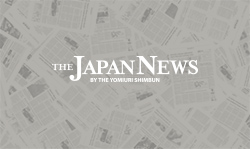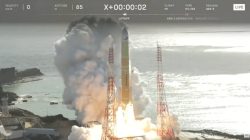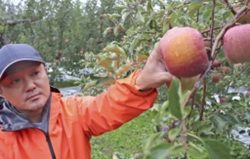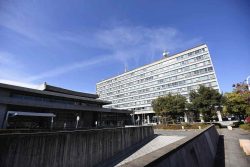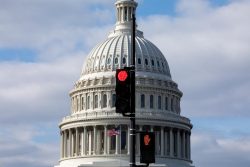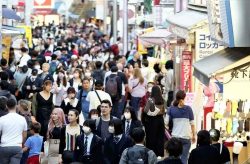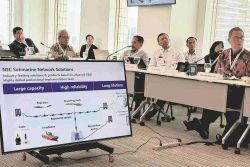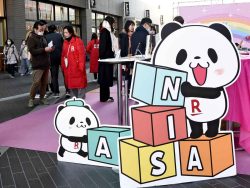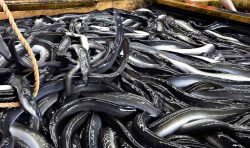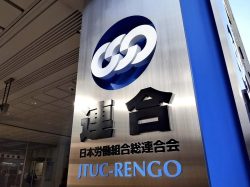Tough U.S.-Japan Talks Loom Over Cars, Rice; American Deregulation Demands Could Threaten Safety of Automobiles, Food
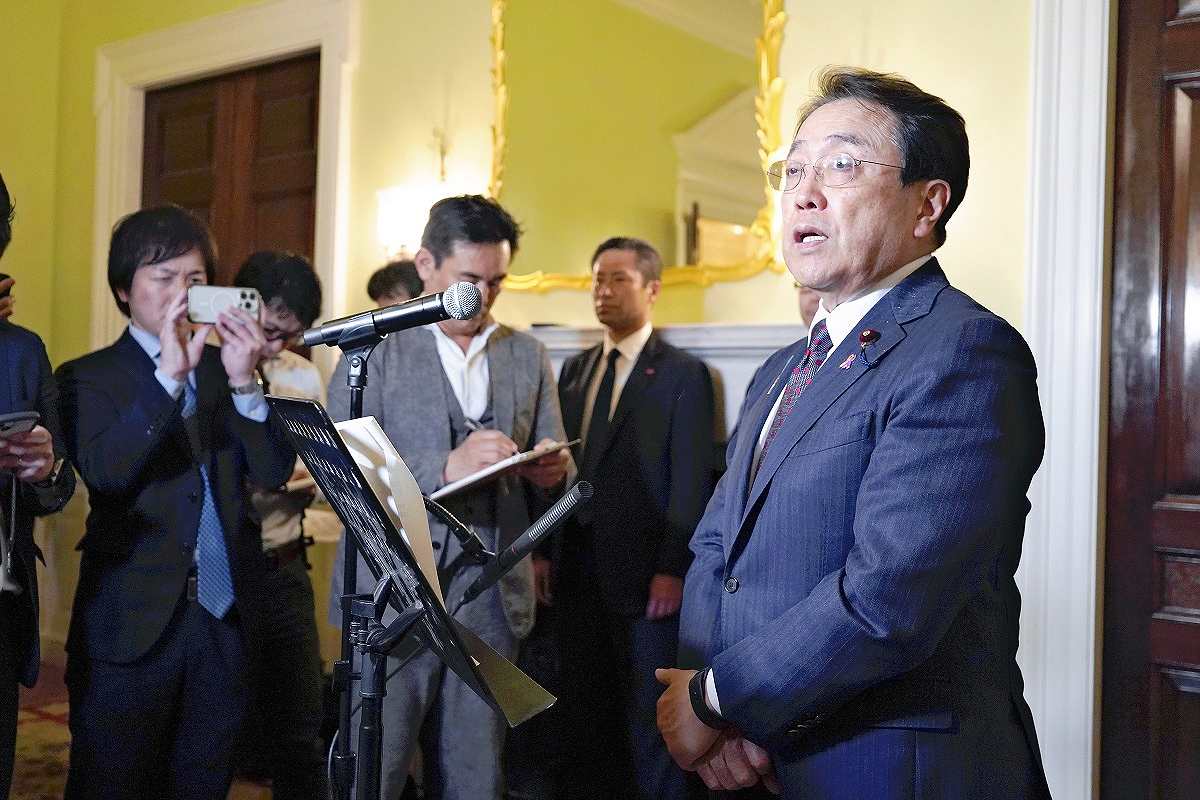
Economic revitalization minister Ryosei Akazawa speaks at a press conference after talks with U.S. officials in Washington on Wednesday.
1:00 JST, April 19, 2025
Japan faces particularly difficult negotiations with the administration of U.S. President Donald Trump over tariffs, given that the U.S. is believed to be demanding deregulation, especially on rice imports and automobile safety standards, which would have direct implications for food safety and automobile performance in Japan.
Discussions on the U.S. tariff measures are expected to focus on dealing with non-tariff barriers the United States claims impede the sale of U.S. products in the Japanese market. The U.S. administration is reportedly pushing for the removal of these barriers in several key areas.
USTR report
“To avoid revealing what the Americans are thinking, I must refrain from answering,” Ryosei Akazawa, Japan’s chief negotiator who also serves as economic revitalization minister, told reporters Wednesday when asked whether there had been any specific U.S. requests regarding non-tariff barriers during his meeting with U.S. officials.
Lack of transparency
Trump has claimed that Japan puts a 700% tariff on rice, which he cites as a prime example of an excessive trade barrier. The USTR report notes that not only does Japan impose high tariffs on rice, but its systems for importation and distribution are lacking in transparency.
In accordance with World Trade Organization rules, Japan maintains a duty-free rice import quota, termed “minimum access,” currently set at 770,000 tons annually. However, less than 100,000 tons of this quota is allocated for staple food consumption, with the majority going to non-staple uses such as animal feed.
Japan imposes a tariff of ¥341 per kilogram on rice imports beyond this limit. At current international prices, this represents a tariff rate of roughly 200%.
Regarding potential tariff revisions and import quota increases, Agriculture, Forestry and Fisheries Minister Taku Eto said that the Japanese government was not at the stage of considering these things in detail now.
The USTR report also identifies non-tariff barriers for beef and wheat. For beef, it views Japan‘s requirement to remove specified risk materials as an issue, while for wheat, it sees the import markup levied on sales to milling companies as problematic.
Ensuring safety
In the automotive sector, the United States is believed to be concerned about discrepancies in safety standards between Japan and the United States, as well as Japan’s subsidies for electric vehicles.
For safety standards, the United States claims that its safety standards are not treated as equivalent to those of Japan. This is attributed to Japan’s requirement that even automobiles that meet U.S. safety standards be inspected according to Japanese standards when exported and sold in Japan.
Land, Infrastructure, Transport and Tourism Minister Hiromasa Nakano countered, “Japan’s safety standards are in line with U.N. standards.”
Reflecting wider sentiment within the ministry, a senior ministry official emphasized that “ensuring safety is the prerequisite for any consideration” of easing safety regulations, given their direct impact on vehicle performance.
The USTR report also touches upon EV subsidies and charger standards. The United States claims that Japanese automakers benefit the most because subsidies are high in areas where they excel, such as hydrogen fuel cell vehicles, while electric vehicles, where U.S. companies like Tesla dominate, receive less support.
Regarding EV chargers, the report argues that the dominance of Japan’s unique charging standards makes it difficult for U.S. automakers’ EVs to be used, which the United States claims is a factor hindering EV sales by U.S. companies.
One senior official at the transport ministry said, “The reason American cars don’t sell well is not because of strict regulations, but because they don’t make cars that are easy to use in Japan.” This view persists within the Japanese government.
Related Tags
"Politics" POPULAR ARTICLE
-

Japan to Support Central Asian Logistics Route That Bypasses Russia, Plan to Be Part of Upcoming Summit in Tokyo
-

Japan to Tighten Screening of Foreigners’ Residential Status by Providing Information of Nonpayment of Taxes
-
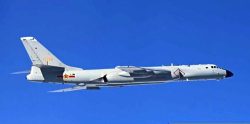
Chinese, Russian Bombers Flew Unusual Path by Heading Toward Tokyo; Move Likely Meant to Intimidate Japan
-

Japan Plans National Database to Track Foreign Ownership of Real Estate, Land as It Weighs New Rules
-

Up to 199,000 Deaths Estimated From Mega-Tsunami; Most Recent Occurrence Took Place in 17th Century
JN ACCESS RANKING
-
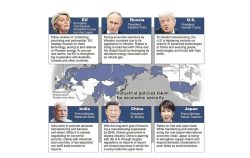
Tokyo Economic Security Forum to Hold Inaugural Meeting Amid Tense Global Environment
-
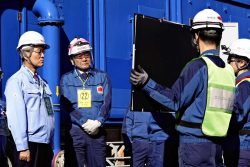
Keidanren Chairman Yoshinobu Tsutsui Visits Kashiwazaki-Kariwa Nuclear Power Plant; Inspects New Emergency Safety System
-
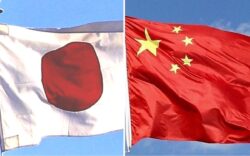
Imports of Rare Earths from China Facing Delays, May Be Caused by Deterioration of Japan-China Relations
-
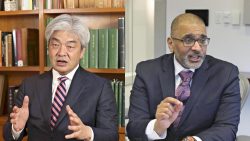
University of Tokyo Professor Discusses Japanese Economic Security in Interview Ahead of Forum
-
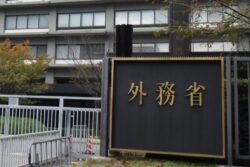
Japan Pulls out of Vietnam Nuclear Project, Complicating Hanoi’s Power Plans


